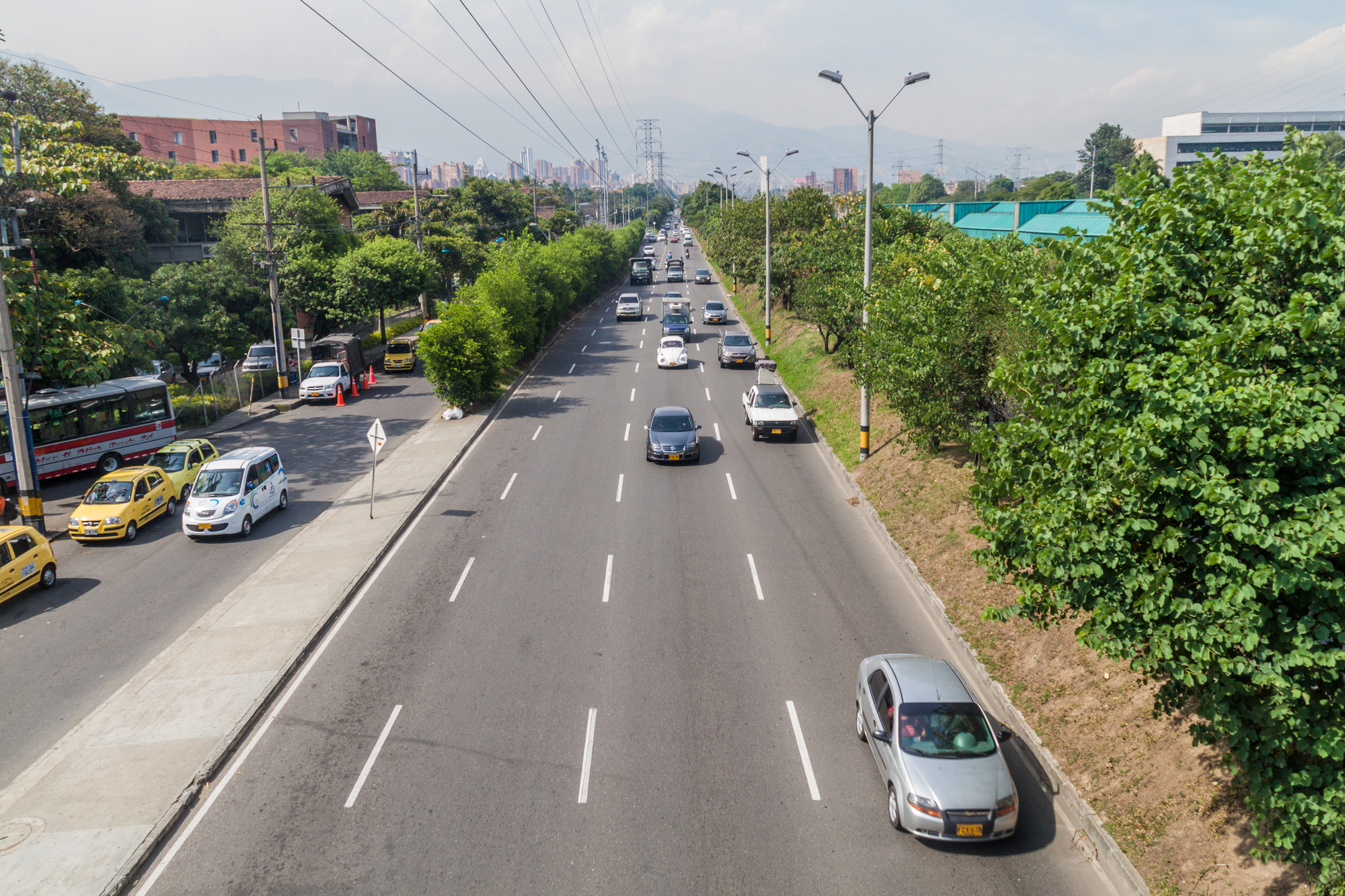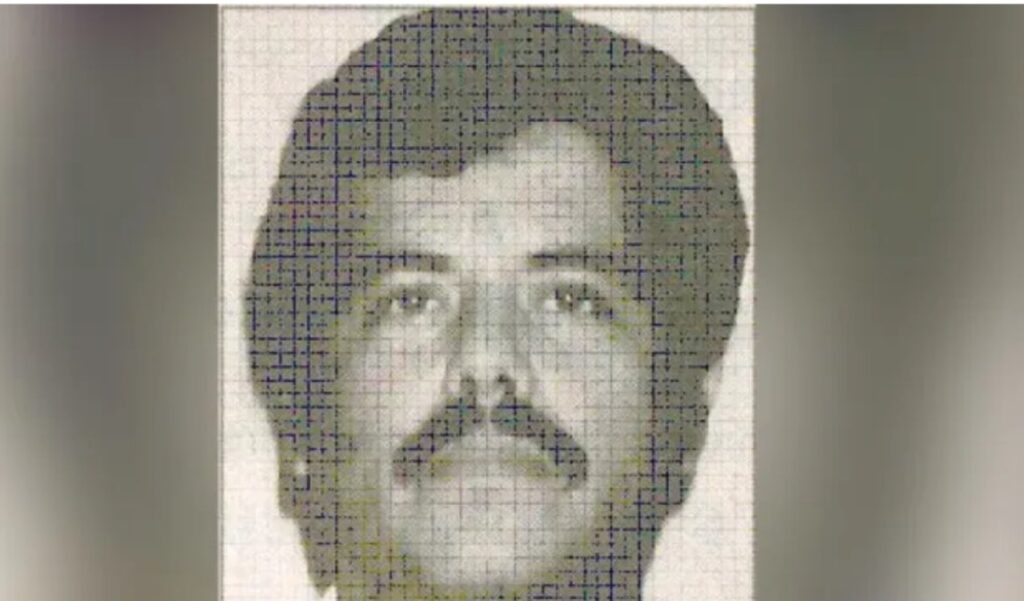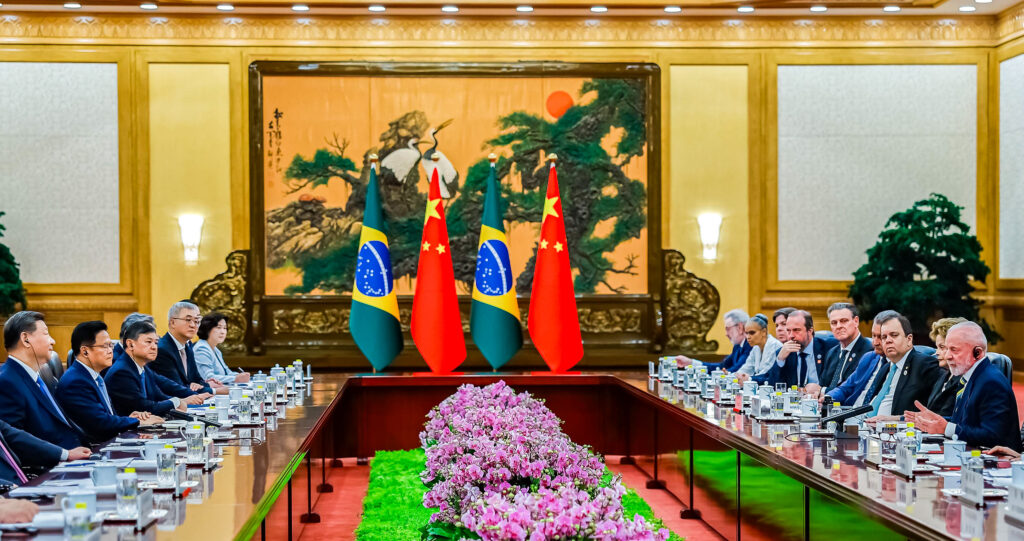The city of Medellín has recently imposed a state of preventative alert on its driving restriction policy due to dangerously high levels of pollution that have been affecting the health of the metropolis.
The policy, known as pico y placa – which literally translates to ‘peak and plate’ – restricts private vehicles from driving during specific time periods on certain days. It was originally introduced to reduce traffic congestion during rush hours. However, since it was imposed by the then-Mayor of Bogotá Enrique Peñalosa in 1998, the system has doubled as an attempted measure to combat levels of air pollution.
Pollution levels in Medellín, Colombia’s second-largest city, are particularly troubling. Over 4,500 people have died from respiratory illnesses since 2014 in the city, the results of a recent study have confirmed. Research was carried out by the city’s comptroller general, the Center for Investigation, Studies and Analysis (CEA) and Medellín’s Universidad Nacional.
After a recent period of notably thick smog, the local government has imposed stricter environmental pico y placa restrictions, which means that private cars, motorbikes and trucks with specific number plates have been prohibited from driving between the hours of 5am until 10am, and 4pm until 8pm. The restrictions also apply to private vehicles that have been manufactured after a certain year, which for cars and motorbikes is 1996 and trucks is 2009.
Besides vehicles, industries with registered levels of environmental pollution have been obliged to suspend activities on select days. Physical activity and open-air sports, such as the Sunday ciclovía (closing of roads to open up for bicycles and pedestrians), have also been prohibited intermittently.
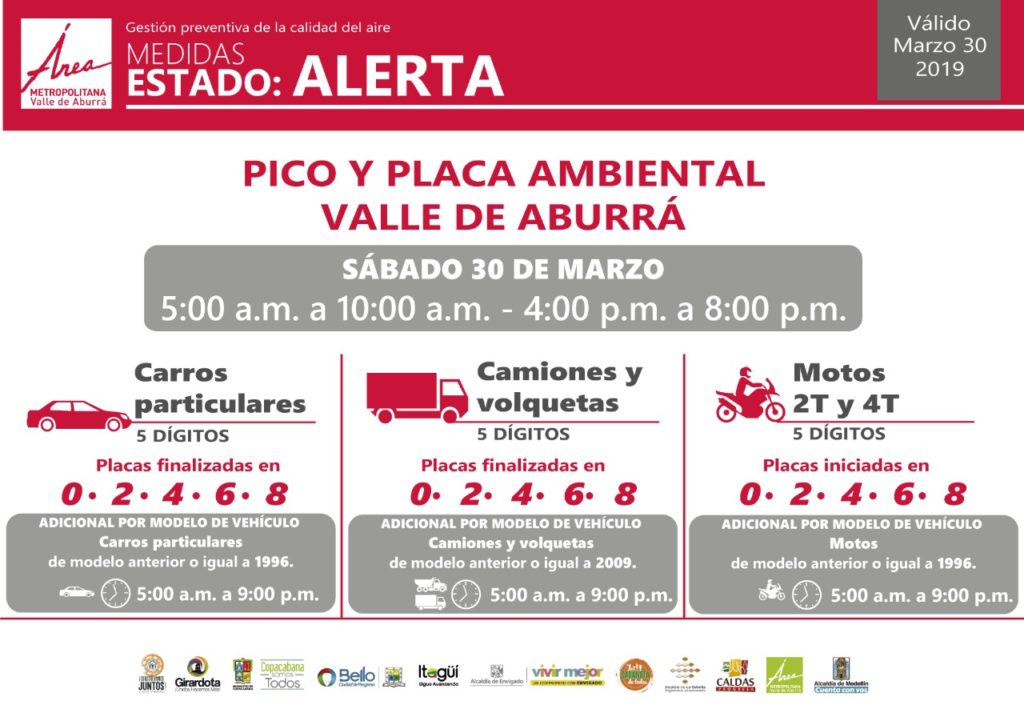
In a press conference last week, environmental sub-director for the Metropolitan Area of the Aburrá Valley, Maria del Pilar Restrepo emphasized that the city was not imposing a state of alert, but of preventative alert. For the sake of forecasting, “measures of this level are taken in order to protect citizens’ health,” she explained.
She spoke on behalf of the administrative body that acts as the environmental, mobility and territorial planning authority for the entire Aburrá Valley, one of Colombia’s most heavily populated regions. Its topography is one of the main culprits of high pollution levels in Medellín.
The city is positioned in a narrow valley in which the surrounding mountains act as a barrier to wind circulation. This, combined with meteorological factors such as humidity, temperature and rain can lead to increased concentration and the formation of pollutants in the air.
Currently, “the climatic conditions are disadvantageous for the dispersion of pollutants,” as low clouds are trapping gases in the air, del Pilar Restrepo emphasized.
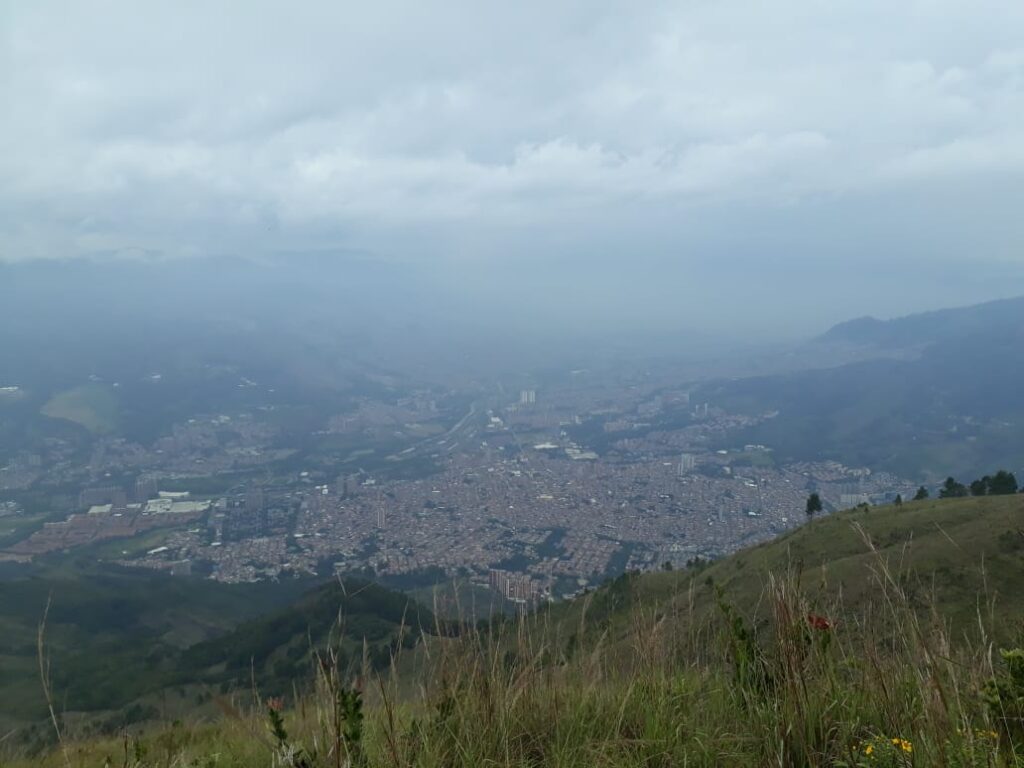
But many Medellín residents and vehicle users do not believe the most recent preventative measures are working.
“Every time the environmental pico y placo hours end, the roads become just as congested as during normal rush hours,” claimed 27-year-old Jonathan Hernández, who drives a motorbike.
“I think it is far from a solution,” echoed John Restrepo, who uses a car as a means of transport for his family. “We are at a critical point and it’s too late to find permanent solutions.” 33-year-old Lauren Bertel, who also drives a car to transport her family, also believes that authorities “have waited for the problem to arrive, without anticipating it.”
Fellow car user Juliana Arboleda, aged 30, claims it is a “short-term answer” to an increasingly pressing problem.“It doesn’t tackle the problem directly and therefore doesn’t resolve it,” she added.
We are at a critical point and it’s too late to find permanent solutions.
“The municipality should prioritize this because the [pollution] levels are very high and this is becoming a public health problem,” emphasized Restrepo. 28-year-old motorbike driver Sergio Ramos agrees that the local government could be doing more.
Motorbike driver Hernández argues that although the initiative is an effective means of controlling traffic, it is a poor means of combating pollution. He suggests tighter restrictions on the engine displacement and manufacturing age of vehicles, proposing a weekly car-free day as an alternative.
“There are still vehicles circulating around the city that are too old,” agrees Ramos, who believes that there are neither benefits nor motivation for people to begin to consider the use of a sustainable transport system.
51-year-old Albeiro Gómez, who owns a private transport company in Medellín, reiterates the need to consider the age of some of the city’s public transport vehicles. “There are companies with buses that are too old and that have too much of a negative environmental impact,” he said.
However, Gómez believes that the recent restrictions have had a somewhat positive impact in changing peoples’ attitudes towards the use of personal vehicles by increasing their environmental conscience. Arboleda agrees, “the restrictions…affect us all, and this has allowed for discussions around new ways of solving the problem to open up.”
Aside from pico y placa restrictions, the Metropolitan Area has a ten-point integrated plan for the management of air quality in place, which aims to reduce levels of air pollution via short, medium and long-term solutions by 2030, in addition to a temporary early alert system which assigns color to the corresponding levels of air pollution and exposure.
When asked to comment on the efficacy of pico y placa as a long-term solution to air pollution, Medellín’s Secretary of Mobility declined to comment, claiming it was a matter of concern for the environmental body Metropolitan Area of the Aburrá Valley. For their part, the Metropolitan Area claimed that their spokesperson would not issue comment until an evaluation of these recent restrictions had been conducted.


